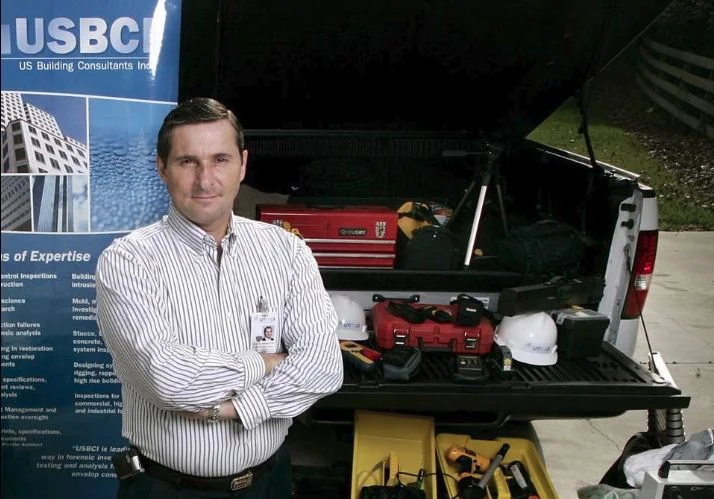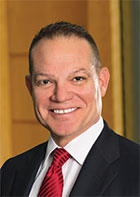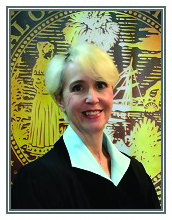It is not uncommon in personal injury cases for the injured individual to delay seeking medical treatment after an incident. Why is that? The fact is that injured persons often do not experience symptoms of injury at the time of an incident, however much later, an injury related to the incident emerges. We refer to such injuries as “latent” injuries, an injury in which the onset of symptoms is delayed. As an attorney, you must be able to recognize that jurors will most likely have an uninformed response, most likely negative, to the concept of latent injuries.
Voir dire in a latent injury case is a process, not merely a series of questions. We have found six effective stages in increasing jurors’ latitude of accepting reasons why clients delay seeking damages. These stages facilitate the transformation of potential juror mindsets. Of course there will always be the ones who remain unaccepting of the delay in seeing a doctor. For those, we provide you with a technique to eliminate them for cause.
1. The first and foremost stage is to assess juror response to the concept of latent injuries, and to internally indoctrinate the legitimacy of such injuries.
2. After this foundation is established, the next is step is to relate their life experiences to the notion of causation.
3. The next step is to facilitate understanding and acceptance, from their own cognitive schemata, of legitimate reasons why people delay seeking medical treatment following an accident.
4. After addressing delays in treatment, explain the concept of “stoicism,” and assess whether or not potential jurors will attribute blame to the client for the delay, or even punishing the victim taking time to seek treatment.
5. Subsequently, you must identify tort reformers and non-believers to eliminate them for cause.
6. Finally, persuade the potential jurors that the client simply cannot manage their pain any longer, and that when an injury manifests so slowly, it takes time for the injured to comes to realize it.
We have found it to be imperative that all of these stages are administered in voir dire for latent injury cases. Let us now explore these stages at a more detailed level.
Response to Injury Latency
It is imperative that you explain to potential jurors that latent onset injuries do exist. In fact, latent onset injuries are recognized in medical literature to a great extent. [1],[2] Despite this, jurors are often predisposed to be skeptical of the nature of these injuries, as they are unfamiliar with the fact that some injuries can appear years after an incident. For example, a concussion after a collision can manifest at a very subtle rate, with somewhat unassuming symptoms developing much later, such as sleep disturbances,[3] which can be left ignored by a stoic individual who is experiencing this symptom. That individual might say, “Oh, I have a lot on my mind, so I can’t sleep that well” or “That collision happened some time ago, I’ll be fine.”
The insight that these injuries do in fact occur has to come from the juror. For example you would ask, “how many of you have had injuries or illnesses that were dormant for a length of time?” The jurors will then answer. For example one might respond, “i broke a finger and now i have developed arthritis.” Now let’s say that this juror did not go to the doctor when his or her finger was broken, perhaps at the time asserting, “there is really nothing significantly wrong here, so why should I go?” Further, let’s say that the finger does not heal, and the doctor says that the injury stayed dormant. Reinforce this experience and encourage others to respond. Note that it is important to establish that every member of the panel has had a loved one, close friend or they, themselves, have experience dormancy. A theme has now emerged: Dormancy.
Juror Life Experiences
Jurors use their own life experiences to make decisions; therefore, they must be given examples that relate to those experiences, as to what they believe causes an injury. This is how you get them to understand the issue of causation. Relating back to the example of the broken finger, ask jurors, “How did the injured know that they broke their finger, causing arthritis?” There must be a causal link established between the incident and the latent injury and you have to single out any additional factors that can be argued that caused the injury. Therefore the only plausible explanation would be that the latent injury was caused from the incident. Ask jurors, “How do you decide what causes something? What evidence do you use to decide causation?”
Why Wait?
What are the reasons why the injured wait to seek treatment? First of all, sometimes the injury goes undetected even upon examination by a medical professional.[4] Second of all, and also the most prominent reason, is the stoicism of the individual. When one inquires with the injured as to why the he or she waited to go doctor after the incident, he or she will most likely respond, “I didn’t think there was really anything wrong with me.” Juror attitudes toward stoicism regarding medical treatment is a critical issue. As an attorney, you must identify those on the panel that wait to treat injuries, and those on the panel who go for treatment right away. It is important to identify the jurors that have a punishment-oriented frame of mind toward a person experiencing a latent-onset injury who did not even think there was anything wrong with themselves in the first place.
Punishment for Stoicism
To elaborate on punishment for stoicism, should the injured be punished for being stoic? The injured are experiencing a delayed-onset injury, and at the time of the incident, simply did not think there is anything wrong. Further, if they know they are injured, they likely will not believe that they are injured severely enough to go to hospital. This is where the suspicion comes from with jurors. The jurors will think that this person has a new injury, unrelated to the alleged injury at hand, and is looking to be compensated. In addition, jurors might believe that the injured simply wants/needs money and is now claiming a latent injury to better his or her current financial situation. Ask jurors, “How many of you think people should be stoic by not making a large deal about the injury?” and ask, “For the injured client who is being ‘doctor latent’, as in a person who waits to see the doctor, would you punish them? Why or why not?”
Identify with Jurors
You must identify the client with the potential jurors. For example, a clever way to broach the topic is to lead with, “My client believed in tort reform until…” Many lawyers present with, “What is interesting is that my client did not believe in lawsuits until…” Potential jurors will be affected by this approach because by presenting these questions, you are essentially aiming to have tort reform jurors identify with your client. You do not want jurors on your panel who do not have the ability to perceive and consider the client as an “individual difference[5]”, or those who will be generalizing him as money seeking or unethical “like all of the rest.” You will be able to identify the jurors that who have a mindset transformation and will be able to consider the client’s individual circumstance.
Introduce that and then ask, “How many of you know someone who is stoic and believes there are too many lawsuits?” and “How many of you know someone who might say, ‘I would not make mountain out of mole hill?’” Then respond by saying, “That’s my client.”
Additional questions to ask include, “How many of you believe that there are too many lawsuits? Why or why not?” and “How many of you believe that this is a “sue-happy” society? Why do you think and feel this way?” and “Do you think that lawsuits harm you in any way? Why or why not? Do you think they help you in any way? Why or why not?” and “Will you punish someone for having a high pain tolerance? Why?” Also include, “Without hearing any evidence, if you were to hear that the client experienced a latent injury, how many of you simply will not find in his/her favor?” Follow up with cause questions, for example, “How long have you felt that way? Are you not likely to change your mind?” If they can’t, they can’t and that is fine. “How many of you agree/disagree? Why?” The ones who agree must go for cause.
The final knock out punch is ”Before hearing any evidence, how many of you believe that you cannot determine what caused the injury or that it is related to a past event?” Follow up with your cause questions.
Dissipation of Endurance
Often latent injury victims are in so much pain that they have difficulty enduring the discomfort. Though the injury started out as undetected, slowly over time it transformed to full-on pain. The concept is similar domestic abuse. In the beginning of the relationship, the abuse is so subtle that the victim does not realize its presence. The abuse happens ever so slowly and increases in a way that it takes him or her much time to realize the effect that it has had on the victim’s life. It is not until much later that the victim comes to realize it. Now take that analogy and apply it to latent injuries. It could take a year or more to understand that one had an injury or that the extent of the injury has become much more serious. After this, the attorney should go for cause. Ask questions such as, “How many of you believe there is no such thing as a person with a severe injury who could be stoic without hearing any evidence? How long have you felt this way?” And “Is there anything that could change your mind or reconsider?”
More on Cause
In addition to the six stages, it is important that we further address elimination for cause. To aid in eliminating jurors for cause, we have found it most effective to ask closed-ended questions. Here is why: if we are certain that a potential juror is not our advocate, by asking closed-ended yes/no questions we are not allowing that individual the opportunity for further engagement. If given an open-ended question, that individual might seemingly rectify his or her ability to be impartial, and thus impair our strategy to strike for cause.
It is essential to employ the following closed-ended incantations, tailored to your case. For example, “How many of you believe that a neck injury cannot manifest itself a week or even longer than after an incident?” and “How many of you believe that if someone is hurt, they will feel it right away?” and “Do you feel strongly about your beliefs?” and “Are you not likely to change your mind?” and “So does this mean we are not starting out even?” At this point, the attorney should tell the venire member “I appreciate your honesty.” Then ask, “By a show of hands, how many of you agree with what this person just said and you will not be able to put your feelings aside?” It is essential to employ all of these incantations.
Conclusion
The theme throughout the process of presenting jurors with the concept of latent injuries is “dormancy.” We have found that the trajectory of understanding latent injuries is not mutually exclusive and exhaustive. Dormancy is integrated throughout the model presented, and must be demonstrated systematically, as personal experience, skepticism and lack of education on the topic can ultimately decide the verdict. Without convincing jurors that latent injuries do exist, and without the incorporation of juror insight, you are essentially spinning your wheels.
Establishing a causal link for the accident and the injury deeply seats the concept of dormancy. If you do not establish a cause, dissecting the latent injury into a plausible situation, it will seem as if you are making a “leap” and you will lose credibility.
Unfortunately, some of the jurors will fall back on their skeptical disposition when they have to try to understand “doctor latency” and why the injured waited to seek damages. This will bleed into the notion of “sue happy” or greed. However, the identification of these individuals will lead you to identify tort reformers. Then go in for cause by asking closed-ended questions. When we eliminate for cause, the theme of dormancy will remain within your panel.













![Perfect Presentations Your Jurors Will Fall In Love With [Part 3]](https://images.squarespace-cdn.com/content/v1/532b27ffe4b0ccd5fa53f29d/1416258499960-LXIIOMWSH1C4PMQUFU0T/image-asset.jpeg)
![Perfect Presentations Your Jurors Will Fall In Love With [Part 2]](https://images.squarespace-cdn.com/content/v1/532b27ffe4b0ccd5fa53f29d/1415303781136-ZFXZ5QE0HTE7LX6QD2RN/image-asset.jpeg)
![Perfect Presentations Your Jurors Will Fall In Love With [Part 1]](https://images.squarespace-cdn.com/content/v1/532b27ffe4b0ccd5fa53f29d/1414422193770-YCDUD76JSCLSKNYCTVIS/image-asset.jpeg)